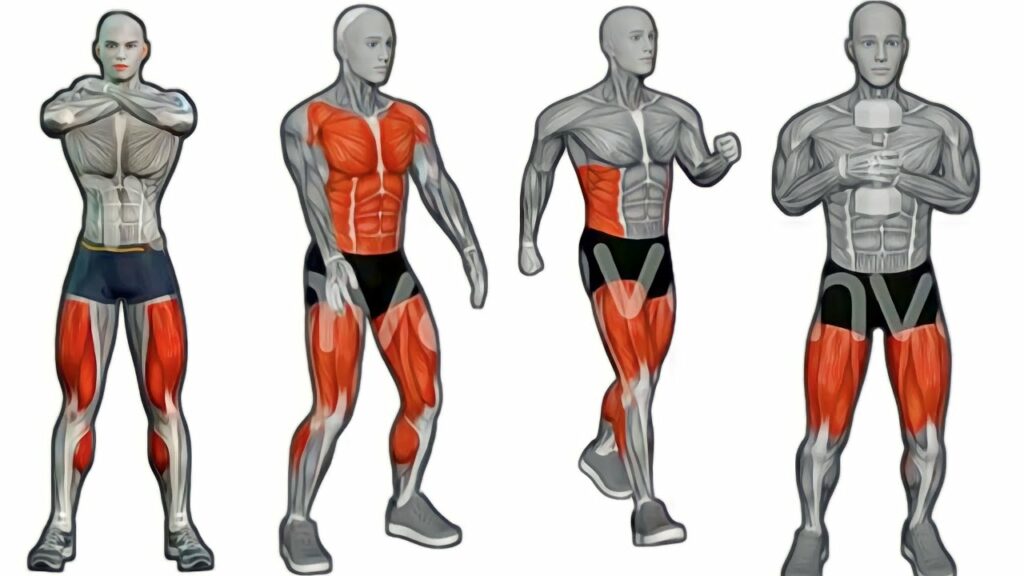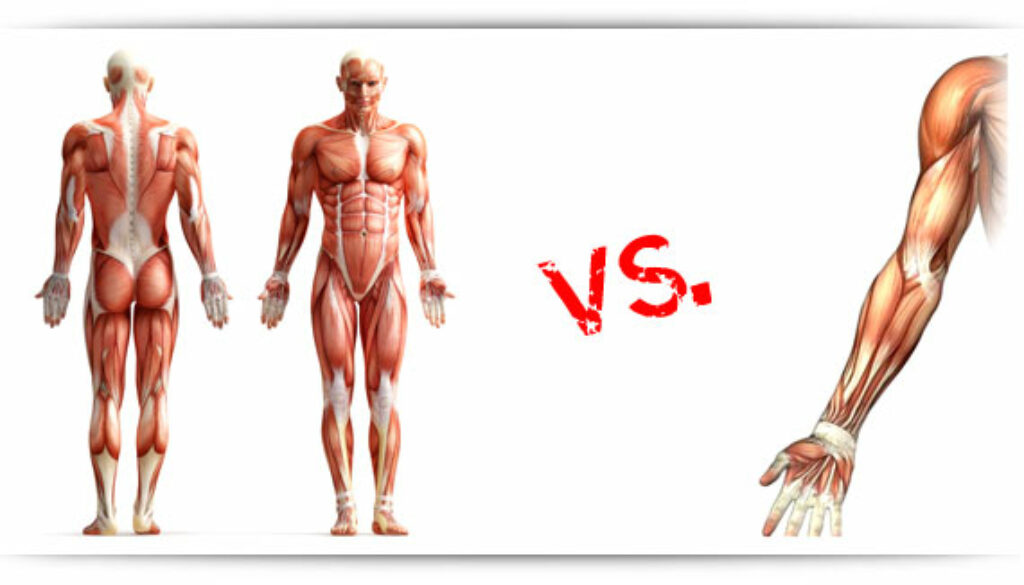Cardio vs. Strength Training: Which Is Right for You?
In the ongoing debate of Cardio vs. Strength Training, it’s crucial to understand the distinct advantages and considerations of each approach before deciding on the right fitness regime for you. Cardiovascular exercise and strength training are two popular forms of exercise, each offering unique benefits for overall health and fitness. While cardio workouts focus on increasing heart rate and improving endurance, strength training aims to build muscle and enhance strength.
Choosing between the two can be challenging, especially when considering individual goals and preferences. In this article, we will explore the merits of cardio and strength training and help you decide which is right for you.
Benefits of Cardiovascular Exercise
Cardiovascular exercise, often referred to as cardio, involves activities that elevate heart rate, such as running, cycling, or swimming. The benefits of cardio extend beyond just burning calories. Regular cardio workouts can improve heart health, increase stamina and endurance, aid in weight loss, and provide stress relief.
Improved heart health is one of the primary advantages of cardio exercise. Engaging in activities that elevate heart rate strengthens the heart muscles, improves blood flow, and lowers the risk of cardiovascular diseases. Additionally, cardio workouts can enhance stamina and endurance, allowing you to perform daily tasks with greater ease and reducing fatigue.
For those looking to shed excess weight, cardio can be an effective tool. By increasing heart rate and exerting energy, cardio workouts burn calories, leading to weight loss over time. Moreover, cardio exercises like jogging or dancing can be a great way to relieve stress and boost mood, releasing endorphins that promote feelings of well-being.
Benefits of Strength Training
While cardio exercises primarily focus on improving cardiovascular fitness, strength training emphasizes building muscle strength and tone. Contrary to popular belief, strength training is not limited to lifting heavy weights. It can include bodyweight exercises, resistance band workouts, or even using light weights for higher repetitions.
One significant benefit of strength training is increased muscle strength and tone. Regular strength training exercises activate and develop muscles, leading to improved strength and enhance overall performance in everyday activities. Additionally, building muscle through strength training can increase metabolism, contributing to long-term fat loss and weight management.
Strength training also plays a crucial role in maintaining optimal bone health. Resistance exercises stimulate the production of new bone tissue, thereby reducing the risk of osteoporosis and fractures. By increasing bone density, strength training can promote longevity and overall well-being.
Moreover, strength training plays a vital role in injury prevention. Strengthening the muscles around joints and improving stability can help reduce the risk of sprains, strains, and other injuries. By focusing on proper form and technique, individuals can correct muscular imbalances and improve overall body alignment.
Cardio vs. Strength Training for Weight Loss
One common question when it comes to exercise for weight loss is whether cardio or strength training is more effective. While both methods can contribute to weight loss, they have different mechanisms and impacts on the body.
Cardio exercises burn calories during the workout itself, making it an effective way to create a calorie deficit and aid in weight loss. The intensity and duration of the cardio workout largely determine the amount of calories burned. Continuous activities like running or swimming for an extended period result in greater calorie expenditure.

On the other hand, strength training has a more indirect effect on weight loss. While strength training burns calories during the workout, its primary influence lies in its impact on metabolism. Building lean muscle mass through strength training results in an increased basal metabolic rate (BMR). This means that even at rest, your body burns more calories, contributing to long-term fat loss and weight management.
For optimal weight loss, combining both cardio and strength training is highly recommended. Cardio exercises can create an immediate calorie burn, while strength training helps build lean muscle mass, boosting metabolism for long-term fat loss. The combination of the two forms of exercise provides a comprehensive weight loss strategy.
Cardio vs. Strength Training for Overall Health
While weight loss is an important aspect of fitness, overall health should also be considered. Cardiovascular exercise and strength training offer distinct benefits that contribute to overall well-being.
Cardiovascular exercise is particularly beneficial for heart health. Engaging in activities that raise heart rate strengthens the heart muscle, improves blood flow, and lowers blood pressure. Regular cardio workouts reduce the risk of heart diseases, such as heart attacks and strokes.
Strength training, on the other hand, provides unique advantages for muscle and bone health. By engaging in strength training exercises, individuals can increase muscle mass, enhance muscular strength, and improve overall body composition. Additionally, strengthening muscles helps protect joints and prevent age-related muscle loss.
It is important to note that a comprehensive fitness routine should include both cardio and strength training. The cardiovascular benefits of cardio exercises and the muscle-strengthening benefits of strength training complement each other, leading to a well-rounded fitness regimen and improved overall health.
Cardio vs. Strength Training for Specific Goals
Individual fitness goals can influence the preference for either cardio or strength training. Understanding the benefits of each form of exercise can help tailor workouts to achieve specific objectives.
Cardio exercises are ideal for those looking to improve cardiovascular fitness and endurance. Running, cycling, or swimming are effective ways to elevate heart rate, strengthen the heart muscle, and enhance stamina. By pushing boundaries and increasing intensity over time, individuals can significantly improve cardiovascular health.
Strength training, on the other hand, is the go-to method for building muscle mass and strength. Lifting weights, using resistance bands, or even performing bodyweight exercises can help individuals gain muscle definition and increase overall strength. Strength training can be particularly beneficial for athletes or individuals looking to enhance athletic performance.
For individuals with specific goals, tailoring workouts to include a combination of both cardio and strength training is often recommended. This approach allows for improvements in cardiovascular fitness while building muscle and strength simultaneously. The key is finding the right balance and intensity for individual needs.
Incorporating Both Cardio and Strength Training
Rather than viewing cardio and strength training as mutually exclusive, incorporating both into a fitness routine can yield optimal results. The combination of the two forms of exercise provides a comprehensive approach to overall fitness.
Experimenting with different combinations and workout schedules can help find what works best for each individual. Alternating cardio and strength training days or incorporating cross-training activities can add variety and prevent boredom. This not only challenges the body in different ways but also promotes overall fitness and full-body conditioning.
Cross-training, which involves engaging in different activities, such as swimming, cycling, or yoga, can provide a well-rounded workout routine. It helps target different muscle groups and reduces the risk of overuse injuries that can occur from repetitive movements.
By incorporating both cardio and strength training into a fitness routine, individuals can achieve optimal results in terms of weight loss, cardiovascular fitness, muscle tone, and overall health.
Considerations and Recommendations
When deciding between cardio and strength training, several considerations should be taken into account. Personal preferences, enjoyment, and individual goals play a significant role in choosing the right form of exercise.
Personal preferences and enjoyment are crucial factors in maintaining consistency in an exercise routine. If you find pleasure and motivation in cardiovascular exercises like running or dancing, incorporating more cardio into your routine is recommended. Similarly, if you enjoy the feeling of strength and power that comes with strength training, focusing more on this aspect can be beneficial.
It is also important to start slow and gradually increase intensity to avoid injuries and burnout. Pushing oneself too hard right from the start can lead to overexertion and unnecessary strain on the body. Instead, beginning with moderate intensity and slowly progressing will help build stamina and prevent injuries.
If unsure about where to start or how to structure a fitness routine, consulting with a fitness professional can provide valuable guidance. A trained professional can assess individual needs, recommend appropriate exercises, and ensure proper form and technique. They can also guide individuals in designing a balanced workout plan that incorporates both cardio and strength training.
Conclusion
When it comes to determining the best exercise strategy, the question of Cardio vs. Strength Training remains a key factor in achieving your desired fitness goals. In the battle of cardio versus strength training, the winner is a balanced combination of both. Cardiovascular exercise and strength training offer unique benefits that contribute to overall health and fitness. Cardio workouts improve heart health, increase endurance, aid in weight loss, and provide stress relief. Strength training builds muscle strength, enhances metabolism, promotes bone health, and helps prevent injuries.
By incorporating both forms of exercise into a well-rounded fitness routine, individuals can achieve optimal results, regardless of their specific goals.
FAQs: Cardio vs. Strength Training
- Is it necessary to do both cardio and strength training?
Absolutely! Combining both cardio and strength training provides a comprehensive approach to overall fitness and health. Cardio exercises elevate heart rate and improve cardiovascular fitness, while strength training helps build muscle, increase metabolism, and prevent age-related muscle loss. - Can cardio exercises help with weight loss?
Cardio exercises play a crucial role in weight loss by burning calories and creating a calorie deficit. Continuous activities like running or cycling can serve as effective cardiovascular workouts to aid in weight loss. - Can strength training help improve bone health?
Yes, strength training stimulates the production of new bone tissue, leading to increased bone density. This can help prevent osteoporosis and reduce the risk of fractures, especially in older adults. - Can I do cardio and strength training on the same day?
Yes, it is possible to do both cardio and strength training on the same day. However, it is important to consider the intensity and timing of each workout to avoid overexertion and promote proper recovery. - Do I need to consult a fitness professional before starting a workout routine?
While it is not mandatory, consulting with a fitness professional can provide valuable guidance and ensure that you are incorporating the right exercises and techniques into your routine. They can help tailor a program to your specific needs and goals, reducing the risk of injuries and maximizing results.
Also Read:
The Ultimate Guide to Glowing Skin: Tips and Tricks



